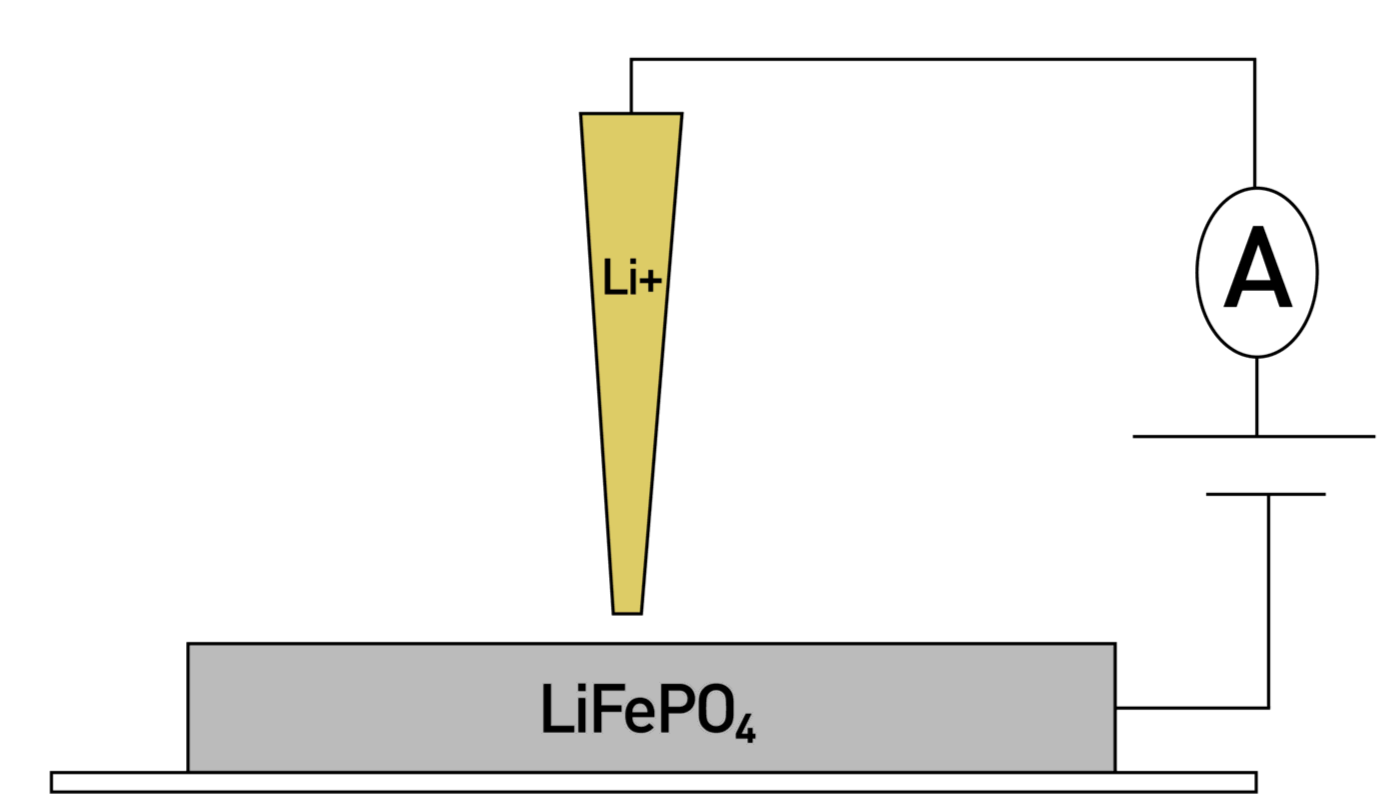
SICM nanopipettes can be used to map the redox activity of battery electrodes. Prior to this novel and powerful approach, known as scanning electrochemical cell microscopy (SECCM), visualising physiochemical processes in batteries was challenging. SECCM has been used to map spatial heterogeneities in the electrochemistry of lithium iron phosphate (LiFePO4) cathode materials, a particularly cost effective and safe battery.
Material Science
3D printing


Principle of 3D conductive polymer printing with glass nanopipettes. A glass nanopipette filled with monomer solution hovers above a conductive substrate (e.g. glassy carbon, ITO glass etc.). When the droplet of monomer formed at the tip of the nanopipette comes into contact with the conductive substrate, a conductive path between the electrode in the nanopipette and the substrate is formed (inset).

The SECCM set up allows the measuring of various electrochemical properties simultaneously with electrode topography. The nanopipette is filled with electrolyte solution and the pipette tip brought close to the sample surface. When the meniscus of solution made contact with the sample, a small anodic current flows, stopping the pipette from approaching further. The formed meniscus allows nanoscale probing of the electrochemical activities of LiFePO4 without the electrode being immersed in solution. The small footprint of the pipette allows the spatially inhomogeneous potential of the electrode to be seen16.
By setting, appropriate nanopipette potential, one can trigger oxidation (O in the inset) of the monomer droplet into a solid 3D polymer structure. The process of oxidation can be monitored via measurement of current of electrons produces during the oxidation (show in red in the inset). Engaging the nanopositioning controls of the SICM setup while oxidising the polymer allows creation of various 3D structures. A SEM image of polypyrrole structures printed on glassy carbon with pipette tip diameter of 300 nm and retraction speed of 250 nm can be seen above17.
References
16 - Takahashi, Y. et al. (2014) "Nanoscale visualization of redox activity at lithium-ion battery cathodes", Nature Communication. Nature Publishing Group, 5, pp. 1-7. doi: 10.1038/ncomms6450
17 - Alex Wibawa. "Engineering Multidimensional Structures Based on Conductive Polymers Using Scanned Nano Pipettes", PhD Thesis, Queen Mary University of London, 2018
16 - Takahashi, Y. et al. (2014) "Nanoscale visualization of redox activity at lithium-ion battery cathodes", Nature Communication. Nature Publishing Group, 5, pp. 1-7. doi: 10.1038/ncomms6450
17 - Alex Wibawa. "Engineering Multidimensional Structures Based on Conductive Polymers Using Scanned Nano Pipettes", PhD Thesis, Queen Mary University of London, 2018

ICAPPIC Limited (main office)
+44 (0) 208 383 3080
info@icappic.com
Address: The Fisheries, Mentmore Terrace, London, E8 3PN, United Kingdom

